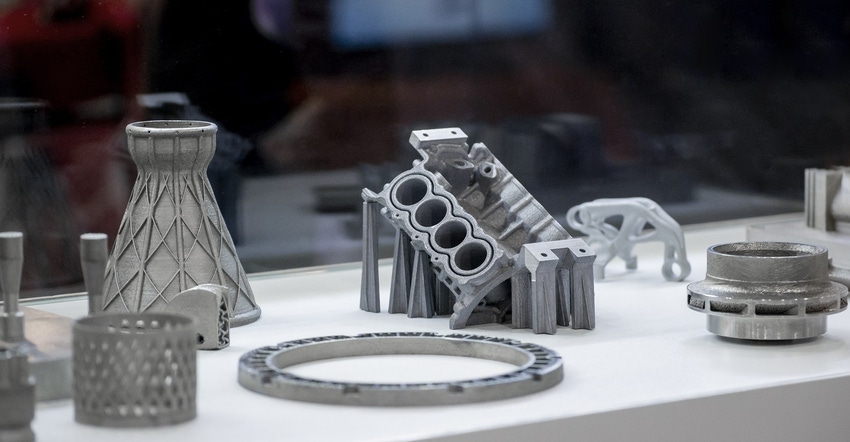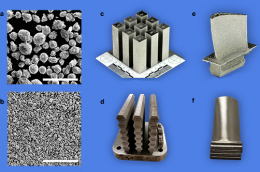Super-alloy Produces Defect-Free 3D Printed Parts
A new class of metals is compatible with 3D printing processes for use in high-performance applications for space, energy, and nuclear industries.
April 14, 2021

Researchers have discovered a new class of super-alloys that solves a common problem with metal 3D-printed parts for high-performance applications—the tendency to crack and have deformations that render them unusable.
Tresa Pollock, a professor of materials and associate dean of the College of Engineering at the University of California Santa Barbara, led a team that discovered a new class of nickel-based 3D printable super-alloys that are high-strength, defect-resistant, and can maintain their material integrity at temperatures up to 90 percent of their melting point. The last characteristic is in contrast to most alloys, which fall apart at 50 percent of their melting temperatures, researchers said.
The newly discovered materials are comprised of approximately equal parts cobalt and nickel as well as smaller amounts of other elements and can be used in a metal additive-manufacturing process called electron beam melting (EBM) as well as a common laser-powder-bed method for printing with metals, they said.

The former process is a particularly precise method that can build parts for advanced applications, such as in space and nuclear-energy industries; however until now most metallic alloys that can withstand heat-intensive and chemically corrosive environments were not compatible with EBM, Pollock said.
This is why she set out to find one that was, she said. “This was interesting because a suite of highly compatible alloys could transform the production of metallic materials having high economic value — i.e. materials that are expensive because their constituents are relatively rare within the earth’s crust — by enabling the manufacture of geometrically complex designs with minimal material waste,” she said in a press statement.
Cracking Under Pressure
Metal 3D printing has definitely come a long way in the last several years, but it still has some limitations in terms of creating parts for applications that require excessive stress, high temperatures, or to maintain their integrity in harsh environments.
While alloys with the strength required for these applications do exist, they so far are incompatible not just with EBM but also with other common 3D=printing processes for metals, Pollock said.
“Most very-high-strength alloys that function in extreme environments cannot be printed, because they crack,” she said in a press statement. “They can crack in their liquid state, when an object is still being printed, or in the solid-state after the material is taken out and given some thermal treatments.”
This tendency to create a deformed part has prevented the use of alloys that already are employed in applications such as aircraft engines to print new designs that could increase performance or energy efficiency, Pollock noted.
Novel Designs
The new class of materials could change all that, she said. Nickel-based superalloys have excellent mechanical properties that have made them a choice material for structural components such as single-crystal (SX) turbine blades and vanes used in the hot sections of aircraft engines, Pollock said.
Indeed, in one variation of a superalloy that the team developed, its high percentage of cobalt allowed the team to design features into the liquid and solid states of the alloy that make it compatible with a wide range of printing conditions, she said.
Researchers published a paper on their work in the journal Nature Communications.
Pollock worked in collaboration with Carpenter Technologies, Oak Ridge National Laboratory, UCSB staff scientists Chris Torbet and Gareth Seward, and UCSB Ph.D. students Sean Murray, Kira Pusch, and Andrew Polonsky, on the research.
The team will continue to experiment with how the superalloys perform in AM processes to determine their viability to produce complex one-off components for use in high-stress, high-performance environments, researchers said.
Elizabeth Montalbano is a freelance writer who has written about technology and culture for more than 20 years. She has lived and worked as a professional journalist in Phoenix, San Francisco, and New York City. In her free time she enjoys surfing, traveling, music, yoga, and cooking. She currently resides in a village on the southwest coast of Portugal.
About the Author(s)
You May Also Like



